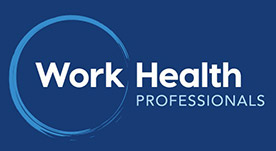Air Monitoring
Work Health Professionals conduct air monitoring in Perth and WA.
Air monitoring, sometimes referred to as an air contaminant survey or dust survey, is conducted by our occupational hygiene specialists to measure and quantify the air contaminant hazards in your workplace environment.
To get the most effective information, air monitoring should be arranged on a day when normal work and processing activities are taking place.
The air sampling protocol we use is contained in Australian Standard 2985 – 2009 Workplace Atmospheres.
What are airborne contaminants?
Airborne contaminants are inhalable particles suspended in the air that may enter the body. Most large particles are stopped in the nose, but smaller respirable particles reach the lungs. Inhaled contaminants may cause tissue damage, tissue reaction, disease, or physical obstruction.
Some of the more common harmful airborne contaminants that require air monitoring include:
- crystalline silica
- diesel particulates
- acrylamides
- asbestos
- dust
- solvents, and others.
Employers responsibilities for air monitoring
You have a 'Duty of Care' for ensuring a safe working environment for your employees.
- In WA, this legislation is governed by WorkSafe.
- Exposure standards have been established in Australia for approximately 700 substances and mixtures.
- To determine whether an exposure standard is being exceeded, or if there is uncertainty, air monitoring may be required.
- Health monitoring may also be required for workers who are at risk of exposure to hazardous chemicals, silica or asbestos.
Safe Work Australia has produced an informative publication on "Workplace exposure standards for airborne contaminants".
Indicators for air monitoring
Indicators of a need for air monitoring in your workplace may include:
- frequent or long duration use of a chemical or process which generates hazardous vapour, dust, mist or fume
- efficiency of ventilation is not known or no mechanical ventilation
- people in the workplace are complaining of health concerns that may be due to the vapour, dust, mist or fumes
- there is the potential for serious health effects if controls are inadequate; and/or
- it is a complex work environment and it is difficult to estimate exposure.

Air monitoring - how long does it take?
An air monitoring program will usually last for a day, but can be longer if a variety of work processes need examining and, depending on the extent of monitoring required, the nature of the processes and the type of laboratory analyses needed.
Airborne hazards in the workplace, such as dusts, gases, vapours, smoke and fumes have the potential to cause or exacerbate a range of serious respiratory disease such as:
- asthma, asbestosis, silicosis, chronic obstructive pulmonary disease and cancers of the respiratory system (eg. mesothelioma and lung cancer).
With the list of agents of respiratory disease increasing due to improved knowledge, the constant changes in industrial processes and materials, and the long latency of many respiratory diseases, workers’ exposure must be minimised and continuously monitored.
Air monitoring - Construction Industry
The most common disease-causing hazard exposure reported by workers in the construction industry was airborne hazards (69%). Types of airborne hazards reported by workers included dust (66%) and gases, vapours or fumes (24%).
Types of dust reported by construction workers included:

- silica
- acrylic materials
- dust from machinery
- alumina/ aluminum dust
- brake dust
- bricks
- concrete
- dirt
- plaster
- sand and timber
Gases, vapours and fumes reported by construction workers included exhaust fumes, paint fumes and petrol/ diesel fumes.
Air monitoring - Manufacturing Industry
The most common hazardous workplace exposure reported by manufacturing workers was also exposure to airborne hazards (64%).
Types of airborne hazards reported by these workers included:

- steam
- welding fumes
- exhaust fumes
- forklift gas
- glue vapours
- oxyacetylene fumes
- paint fumes or spray painting fumes, and
- smoke from furnaces and ovens.
The second most common hazard exposure reported in manufacturing was noise (58%).
